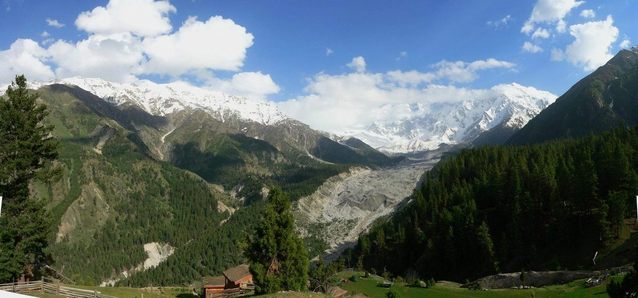Panorama Painting – Representatives, Characteristics and Evolution
Contents
What is Panorama Painting?
Panorama painting, in the visual arts, is a continuous narrative scene or landscape painted to form a flat or curved background, which surrounds or unrolls before the viewer.
Panoramas are usually painted in a broad, direct manner, similar to scene or theatrical painting. This painting was very popular in the late 18th century and into the 19th century, so, the panorama was essentially the ancestor of the stereotype and motion pictures, especially animations and the process called Cinerama.
History of Panorama Painting
The real panorama is displayed on the walls of a large cylinder, the oldest version of about 18 meters in diameter and later ones up to 40 meters in diameter, show the work to the viewer standing on a platform in the center of the cylinder, who turns around and sees successively all the points of the horizon.
The effect of being surrounded by a landscape or event can be intensified by the use of indirect lighting to give the illusion that the light is emanating from the painting itself.
Types of Panorama Painting
While each artist has his or her own style of creating landscape art, this genre is typically grouped into three categories: representational, impressionistic and abstract. Each style has its own characteristics, varying with the colors, lighting and props placed in the shot.
Landscape art is typically described as a painting or photograph in which the subjects are from nature. While each artist has their own style of creating landscape art, this genre is typically grouped into three categories: representational, impressionistic and abstract. Each style has its own characteristics, varying with the colors, lighting and props placed in the shot.
Characteristics of Panorama Painting
Representational landscape art is the most basic of the genre. In representational pieces, no special colors or filters are used to produce an unrealistic effect. Rather, representational landscape art focuses on the natural beauty of nature, and paints a realistic picture of the subject.
Impressionistic landscape art focuses on depicting a realistic scene in an almost unrealistic light. This is achieved by using various methods, including separating the foreground from the background using soft focus, applying unusual lighting techniques, or incorporating saturated, bright or unnatural colors into the scene.
Impressionistic landscape art responds largely to the artist’s or photographer’s vision and ability to create a stunning image of nature, with the help of his or her artistic skills.
Legacy of this Painting
The first panorama was executed by the Scottish painter Robert Barker, who exhibited in Edinburgh in 1788 a view of that city, followed by panoramas of London and battle scenes of the Napoleonic Wars.
Another early panorama painter, the American John Vanderlyn, painted in 1816-19 the Palace and Gardens of Versailles (preserved in the Metropolitan Museum of Art in New York City), exhibited until 1829 in a rotunda he built in a rented corner of New York City’s City Hall Park.
Representatives of this Painting
In the mid-19th century, panoramas became a popular form of entertainment. Among the important works of that period was Henri Philippoteaux’s Siege of Paris, which depicted an event of the Franco-Prussian War.
His son Paul painted the panorama of The Battle of Gettysburg (1883), exhibiting it in several American cities before its permanent installation in Gettysburg, Pennsylvania. Other examples survive in The Hague and Quebec City. A superior form of panorama art is traditional Chinese and Japanese hand scroll painting on paper or silk.

